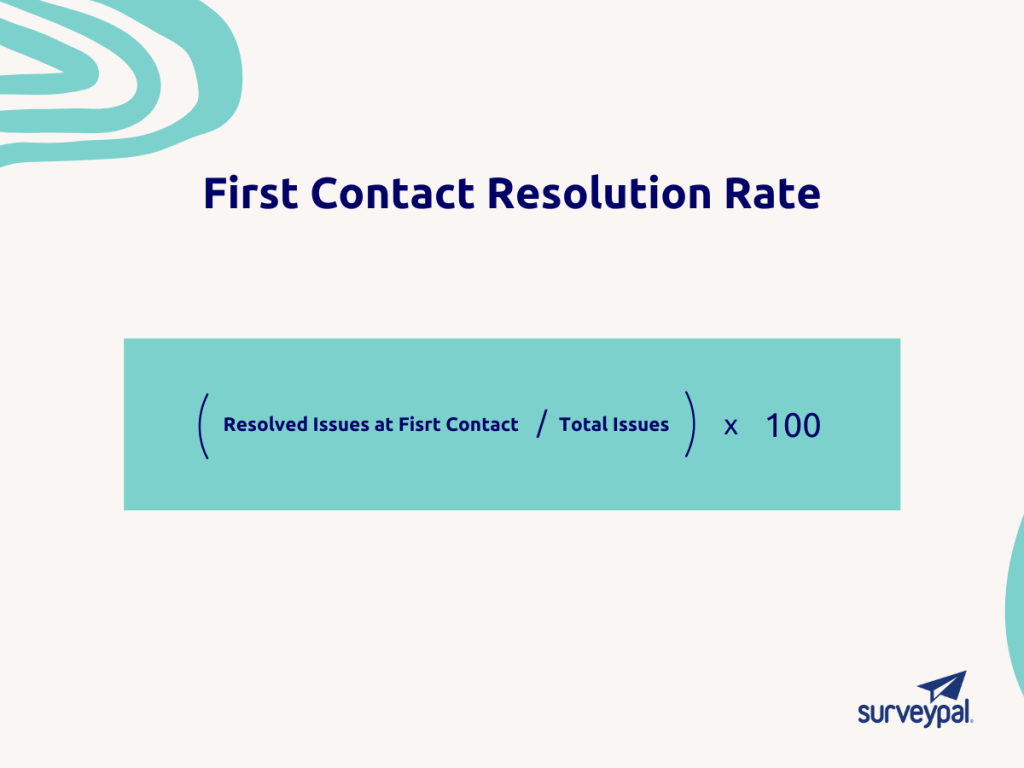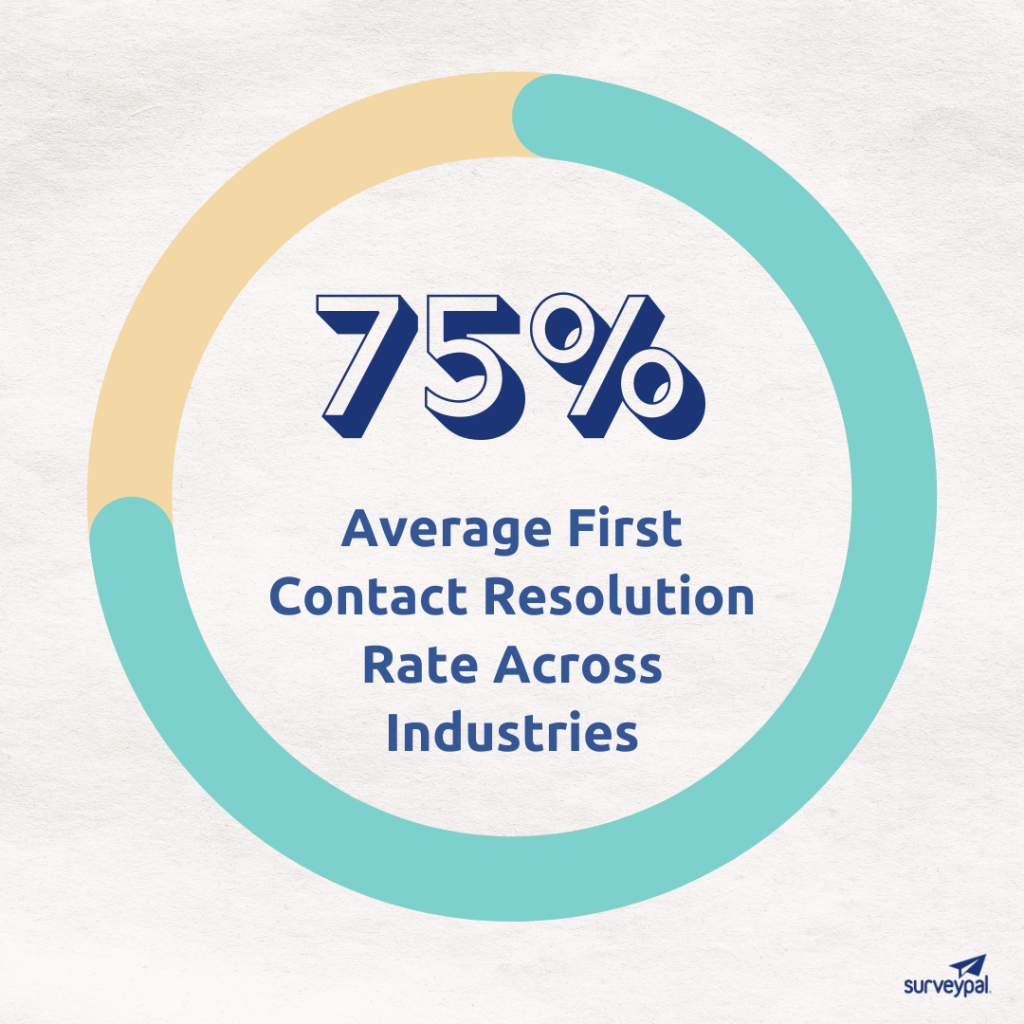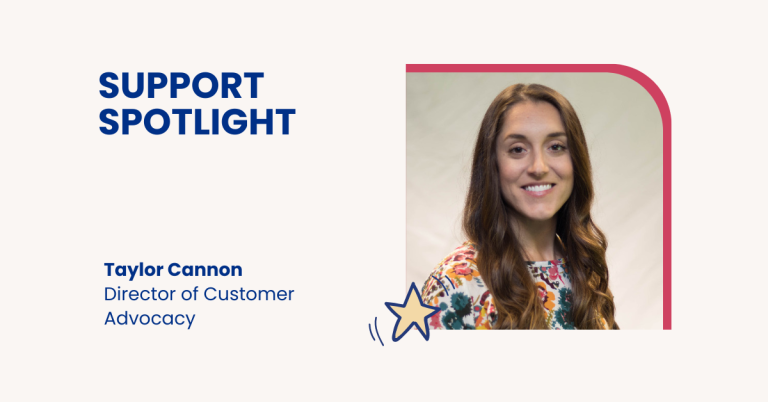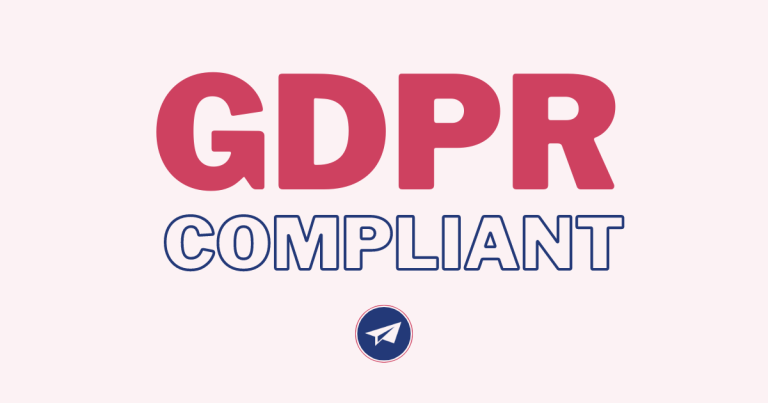First Contact Resolution is one of the most commonly measured support metrics, and for good reason. The percentage of customer inquiries resolved at the first attempt directly correlates to customer service performance and customer satisfaction.
In the following paragraphs we take a deep dive into everything you need to know about First Contact Resolution rates and how to improve them.
What is First Contact Resolution?
First Contact Resolution (FCR) measures your ability to resolve a customer’s issue the first time they get in touch thus, eliminating the need for a follow up. Many consider FCR to be one of the cornerstone metrics of contact center productivity as it helps assess agent performance and operational efficiency simultaneously.
What is the difference between First Contact Resolution and First Call Resolution (FCR)?
The term First Call Resolution was introduced in a time when the phone call was the main communication method between a company and its customers or prospects. These days, however, the phone call is only one of multiple communication channels the customer can utilize when reaching out for support. As more and more companies embrace the omnichannel approach to customer service and adopt alternative methods of interaction (such as online chat, email, social media, etc.), the term “First Call Resolution” has gradually evolved into “First Contact Resolution” to encompass all the communication channels available to the customer.
How to measure First Contact Resolution?
To get your First Contact Resolution rate, divide the total number of customer inquiries resolved on the first attempt by the total number of inquiries you received in a given time period.
Before actually calculating that percentage, however, you need to do some legwork to enable FCR to deliver insights relevant to your business and the needs of your customers.
Determine your definition of First Contact Resolution
In the context of your business, decide what is the definition of FCR. Are you interested in measuring the total number of successfully resolved requests on the first inquiry divided by the total number of inquiries over a period of time or might it make more sense to measure the number of resolved issues on the first inquiry divided by the total number of first inquiries? This is a crucial first step because your definition will determine the data you need to capture to measure first contact resolution.
Determine your definition of a successfully resolved issue
What does the term resolution mean to you?
- The customer’s issue was resolved
- The customer was satisfied by the way their issue was resolved
- The issue was resolved without the need of a callback
- The first person who received the request resolved the issue
What is First Person Resolution?
The term First Person Resolution is an extension of the typical First Contact Resolution definition, and it refers to the company’s goal to not only resolve a customer issue at first contact but, also, by the first person who received said contact request.
These are all valid questions that also affect the calculation of your FCR and its relevance as a customer service KPI.
Specify for what time period you measure FCR
This time frame refers to the maximum amount of time that is allowed to go by between inquiries for them to contribute in the calculation of the FCR.
Determine how you ascertain the resolution
This step refers to the method you use to mark down a customer inquiry resolved. Many companies go about this either by tracking Customer Satisfaction or by enabling agents to tag resolution in their CRM.
Measure Customer Satisfaction (CSAT)
The most important element of First Contact Resolution lies with your customers and their perception of a resolved issue in a single interaction. The only fail-safe way to make sure the customer’s problem was addressed to their liking on the first attempt is to go ahead and ask whether that was the case or not. In order to determine the customer’s perception, most companies utilize the customer satisfaction score.
Post-contact CSAT surveys
Post-contact customer satisfaction surveys are dispatched right after the interaction is completed and usually include a variation of the following questions:
- Was your issue resolved?
- How satisfied are you with the way your issue was handled?
The answers to these questions will provide you with statistical data to gauge customer sentiment towards their interaction with your contact centre. Moreover, measuring CSAT immediately after the interaction will help you get more accurate data since the customer will most likely better recall what took place.
Follow-up CSAT surveys
Follow up surveys are sent a significant amount of time after the interaction. Companies use these surveys to ensure that the issue has not reoccurred and, therefore, has been fully resolved to the customer’s satisfaction.
Customer Service Software
Customer service software platforms usually have built-in reporting capabilities which you can use to measure FCR. For example, customer care agents can ask the customer whether the issue has been resolved and subsequently make a note of the answer in the CRM.
The First Contact Resolution formula
As mentioned earlier, first contact resolution is the percentage of resolved issues on the first attempt.
The traditional FCR calculation formula goes as follows:

The main thing to keep in mind is that even though FCR is an established contact center KPI, it should be tracked alongside other customer service metrics – such as the Average Handle Time (AHT), Customer Satisfaction, Net Promoter Score, etc. This will ensure that you will gain a deeper understanding of the state of your support operations in relation to your strategical goals.
What is a good First Contact Resolution Rate?
Research shows that a standard benchmark for FCR lies between 70% and 75%. Additionally, the world-class FCR standard is at about 80%. Generally speaking, your goal should be to increase your resolution at first contact because a low FCR negatively affects overall business performance and the customer experience.

In the following paragraphs, we’ll take a closer look at how FCR impacts the well-being of your business.
Why is First Contact Resolution important?
First Contact Resolution is more than just a support KPI as it has a direct impact on the overall success of your business. Even though metrics such as the Net Promoter Score or Customer Effort Score are very popular amongst customer service experts, your ability to systematically improve FCR rates will lead to:
Reduced operational costs
FCR directly impacts the amount of repeat contact requests from customers. Improved FRC rates translate to operational efficiency and reduction of costs associated with customer support.
Improved customer satisfaction
Customers look for hustle-free solutions to their problems and high FCR rates mean exactly that. Solving customer issues according to their standards and in a timely manner will increase overall customer satisfaction with your company.
Improved agent satisfaction
Agent satisfaction is something that many companies tend to overlook. Improved FCR rates however will give you a better understanding of your agents’ performance, training needs, and quality of service. All these can help you assess the level of agent engagement and reward behaviors that drive FCR.
Improved customer experience
The customer experience encompasses every single interaction between the customer and your brand. For many of your clients, their customer service experience represents a moment in time where they have a “personal” interaction with your brand. A qualitative interaction will positively impact their perception of their experience with your organization and can boost retention.
Customer loyalty, upsell, and cross-sell
A customer happy with their experience when contacting support is far less likely to jump ship for a competitor and much more likely to remain loyal in the future. A positive first contact experience will also increase your chances of upselling or cross-selling and, thus, increasing revenues.
How to improve First Contact Resolution: A guide for managers
Now that we have established the importance of FCR for the success of your business, it only makes sense to explore ways in which to improve first contact resolution rates. Here are some of the most useful methods to help you continuously improve it:
Deliver omnichannel support
Omnichannel customer service is a strategy that enables you to offer seamless support across multiple integrated communication channels. This approach not only allows customers to select their preferred channel to reach out to you but, also, enables agents to deliver better service quality by accessing all relevant information pertaining to the issue and the customer from the same system.
The omnichannel strategy uses technology as a tool to empower your agents to resolve issues quickly and effectively – therefore, improving your first contact resolution.
Adjust your Average Handle Time to reflect team goals
The Average Handle Time (AHT) measures the average time an agent spends on each ticket assigned to them. Most customer service organizations have their AHT set in stone and expect agents to resolve tickets in less or equal time to the AHT.
Increasing your AHT can deliver remarkable results in terms of improving First Contact Resolution rates. But it’s not all black and white. For many, an AHT increase goes hand in hand with higher costs.
The usual average handle time is approximately 6 minutes or 360 seconds. For many customer service organizations decreasing ticket handle time is a performance target as it translates to cost savings which makes sense because every contact comes with a monetary cost based on the handling time.
This argument, however, usually excludes repeat contacts. Agents might work in a hurry and steer the conversation in the wrong direction. When customer care representatives are ultra focused at decreasing handle time, it is very often the case that in the long run you receive more repeat contacts which increase costs and lower FCR rates.
Giving agents more time to handle the individual customer requests might be the sustainable solution as you empower them to ask the right questions, bring a pinch of empathy to the conversation, and deliver full proof solutions. Sometimes it just makes sense to invest in your relationship with your customers and the conversations your staff have with them.
An additional reason to consider adjusting your AHT is that the increased pressure to resolve issues as fast as possible drains your agents, negatively impacts morale, and can lead to attrition.
Train your agents
Empower your agents to be there for your customers utilizing coaching, training, reskilling, soft skill development, etc.
If you want to win the FCR battle, it is important to recognize the role of your staff in driving the customer experience.
Having said that, accroding to Zendesk’s CX Trends Report for 2022 agents need manageable workloads, respect, better performance metrics, clear advantage opportunities, and most importantly – training. Based on this research, only 20% of agents are extremely satisfied with the quality of their training and about 17% are extremely satisfied with the frequency of their training. One thing to keep in mind when thinking of and planning for agent training is how your efforts correlate with your First Contact Resolution rates.
Let’s say that your agent Peter is very efficient at handling customer orders. Meanwhile, another agent, Mary excels at dealing with technical issues related to your product. One way to improve your training game is to identify agent specific training needs. You can achieve this by breaking down your FCR by agent to see which agents have the lowest resolution rates.
Your goal here is not to single out underperforming agents but to understand what drives their low FCR rates. You can dig deeper into your metrics and compare reason for contact against FCR to pinpoint customer service issues that are challenging for specific agents. Train these agents accordingly and you will see improvement in your overall FCR.
You might be wondering at this point how to train individual agents with low FCR rates. In short, the answer is on the other side of the table. Check to see which agents boast high FCR rates, use them as coaches or points of reference and gather best practices to improve the skills of your entire team.
Invest in Artificial Intelligence & Automation
Sometimes customer issues are extremely simple to solve. In fact, they might be so simple there is no need to involve an agent. Chatbots and other Artificial Intelligence solutions are great tools to help you with tackling simple issues and meet the customer’s service standards at the same time.
Some additional AI solutions you might want to consider for your contact center include:
- Agent assist
- Machine learning
- Text analysis
- Sentiment analysis
- Natural language processing
Adopt skills-based ticket routing
Assigning inbound contact requests to the next available agent leaves much to be desired in terms of efficiency. By adopting intelligent skills-based routing, you can redirect customer requests to the agent best suited to handle them.
Consult your customer service analytics and figure out which agents excel in which areas and route similar requests to the same agent to increase the possibility of a resolution at first contact.
Offer self-service solutions
These days, you have a variety of tools such as knowledge bases, newsletters, instructional videos, blog posts, product guides, FAQs, etc. that can help you deliver information to help customers solve issues themselves. An investment in customer self-service will significantly boost your FCR by deflecting tickets.
Ticket deflection means that you receive lower volumes of inbound contact requests thus allowing your agents the time to focus on and handle more efficiently complex customer issues.
Create customer profiles and map out the customer journey
Take a closer look at your customer base to develop customer profiles and analyze the customer journey. It will be much easier to understand and anticipate the needs of a client that comes forth with a support request if you examine their profile and pinpoint at which stage of the customer journey they are.
Develop internal processes that support FCR
While some customer problems are quite straightforward, others might demand much more effort to solve them. In those cases, the agent with whom the customer initiated the interaction might require support to successfully resolve the issue. It is up to you to develop an internal structure that expedites the process and is clear to everybody involved.
How to improve First Contact Resolution: A guide for agents
Make sure you are clear on the issue
Well..this is customer service 101. You won’t be able to address an issue unless you understand the problem at hand. The more information you have about a client’s problem the easier and faster it will be to provide solutions. So, take the time to actively listen to the customer explaining the situation. Ask for clarifications in case uncertainties arise. Strive to remain on the same page with the customer for the entirety of the conversation. Customer care is often hectic and there might be a queue of requests pilling up on your desk but making sure you are clear on the issue to begin with will ultimately save you time and allow you to resolve requests conclusively and without the need for call backs.
Manage expectations
After you hone in and fully understand what is it the customer is reaching out to you about, you must have quite a clear understanding of the complexity of the issue which should give you an idea of how much time is required to resolve it. Keep the customer in the loop. Tell them when they should expect their problem to be resolved and explain why it might take longer than they might have anticipated. As a result, the possibility that the customer will abandon the call will become lower, and so will the possibility of them contacting you again with the same issue.
Provide specific and relevant answers
Ah! Happy days. You received a support request. You correctly identified the issue. You know how to fix it! Make sure you are precise when providing the customer with your answer. You wouldn’t want them to reach out once again only because they were unclear on how to follow your instructions or because they got overwhelmed by the amount of information they received.
Educate your customers
Most of us would jump at the opportunity to resolve our problems independently, without a customer care representative on the other side of the line. It is often the case that customers are just unaware of all the available resources and tools that can help them find answers to their issues. Or, if they are aware of them, they might just not know how to use them.
A support interaction is your chance to introduce your users to self-service tools such as your knowledge base or user app and empower them to help themselves.
Be mindful, though, not to overdo it – ask your customers if they would like to learn more about these types of resources and don’t force self-service on them.
Adjust your communication style to match the customer’s
Research suggests that adjusting a customer service representative’s communication style to match that of the customer results in higher resolution rates and increased customer satisfaction.
The key here is your ability to identify the communication style of the customer and adapt yours to match it to create stronger personal connections and boost the customer experience.
According to this article, there are five types of communication styles in the workplace
- The assertive communicator
- The aggressive communicator
- The passive communicator
- The passive-aggressive communicator
- The manipulative communicator
Based on the same article, the most effective and healthy communication style in a customer service setting is the assertive one. The main attributes of this style are politeness, directness, and honesty. Assertive communicators also excel at listening.
On the other hand, according to SQM there are four customer persona communication styles;
- The analyzer – likes accuracy and uses data when interacting with an agent
- The driver – wants results and is aggressive / will tell an agent the solution they want
- The supporter – friendly, collaborative, and agreeable/ will ask for a solution
- The influencer – persuasive and innovative / will tell an agent the solution they want
In order for an agent to deliver exceptional support experiences and make communication choices that correspond to the customer’s persona communication style.
The monetary impact of improving FCR
To put all of the above in perspective, let’s take the following scenario as an example.
That was a lot of information!
Here are the main points you should take away from this article.
- FCR measures contact center performance and efficiency
- The global average FCR rate is between 70%-75%
- Improving FCR by 15% can reduce annual customer service costs by $350K
The benefits of improving FCR include:
- Increased service quality and performance
- Increased support availability
- Reduced operational costs
- Reduced call-escalation volume to 2nd tier
- Increased employee satisfaction
- Increased Customer loyalty and upsell opportunities
WANT TO DETERMINE THE MONETARY IMPACT OF FCR IN YOUR BUSINESS?
Try our FCR savings calculator
Did you like the post?
You might also like:

Surveypal
Everything you need to lead and improve your customer experience. Learn more at surveypal.com, or







